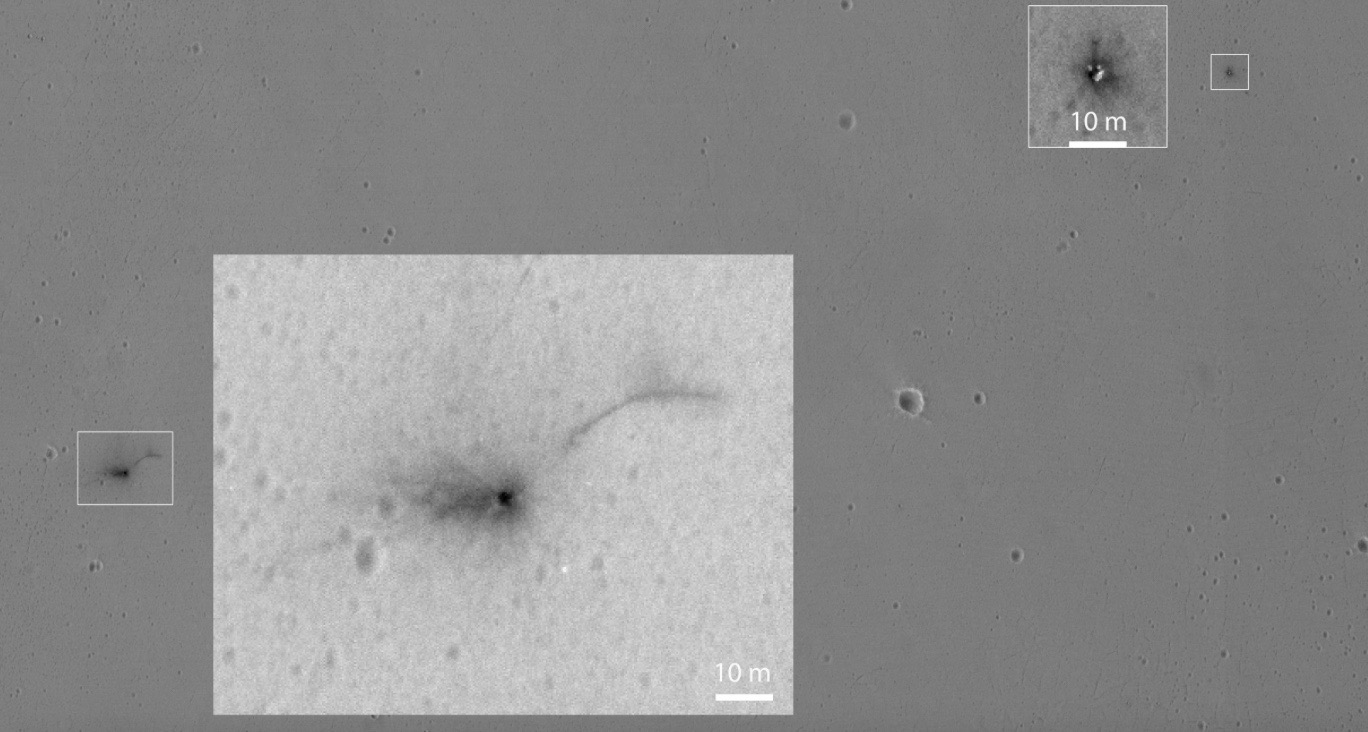Mars' Newest Crater Could Be a Target for Science

Scientists and engineers had hoped Europe's Schiaparelli Mars lander would just be running out of power about now, following a successful mission on the planet's surface.
Instead, Schiaparelli landed with a bang on Oct. 19, victim of a possible software glitch that jettisoned its parachute and shut down landing thrusters woefully early.
Europe has tried to put a happy face on the test flight, which was intended as a trial run before a larger and much more sophisticated rover touches down on Mars in 2021 to search for life.
While impacts to the joint European-Russian ExoMars rover are being sorted out, scientists have cast their eyes on the planet's newest crater, wondering if they may make use of the unexpected glimpse into a freshly unearthed subsurface.
The 660-pound Schiaparelli hit the ground at more than 180 mph, leaving a small crater about 8 feet in diameter and about 20 inches deep.
RELATED: Mars Lander Crashed, Possibly Exploded
Satellites circling Mars have been trying to get a look as they pass overhead.
Breaking space news, the latest updates on rocket launches, skywatching events and more!
"We might see a shallow crater, which could provide some (information) on Mars surface properties, but it's complicated," University of Arizona astronomer Alfred McEwen, lead scientist for the Mars Reconnaissance Orbiter high-resolution camera, wrote in an email to Seeker.
Others were more pessimistic.
"The crater could still be interesting even if small, but in our case it is likely to be contaminated by all kinds of material from the lander and its fuel. So I would not recommend any effort to study this place from that point of view," project scientist Håkan Svedhem said.
NASA and Europe released the first high-resolution MRO images of the crash site on Thursday. The pictures were taken on Tuesday.
"This first HiRISE observation does not show topography indicating the presence of a crater," the European Space Agency said in a statement. "Stereo information from combining this observation with a future one may provide a way to check."
Schiaparelli hit near its intended landing site, a flat region about 2 degrees south of the equator known as Meridiani Planum. The region is not high on scientists' lists of sites that potentially could have hosted and preserved life, but still of interest.
NASA's Opportunity rover has been exploring Meridiani for almost 13 years, but it is too far away to visit Mars' newest impact basin, Schiaparelli crater.
Originally published on Seeker.
Join our Space Forums to keep talking space on the latest missions, night sky and more! And if you have a news tip, correction or comment, let us know at: community@space.com.

Irene Klotz is a founding member and long-time contributor to Space.com. She concurrently spent 25 years as a wire service reporter and freelance writer, specializing in space exploration, planetary science, astronomy and the search for life beyond Earth. A graduate of Northwestern University, Irene currently serves as Space Editor for Aviation Week & Space Technology.
